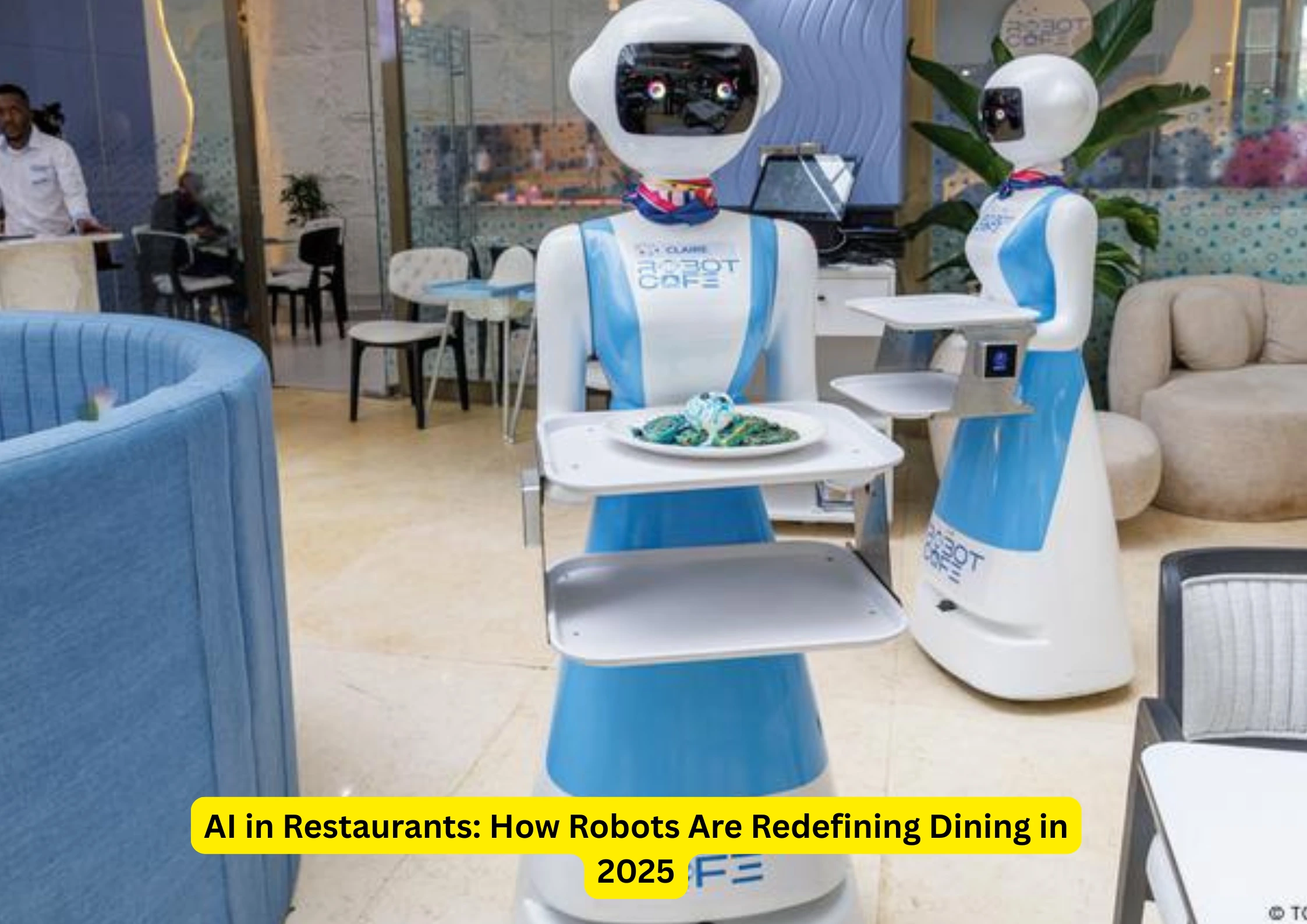AI in Restaurants: How Robots Are Redefining Dining in 2025

Introduction
AI in restaurants industry is undergoing a rapid transformation, driven by cutting-edge innovations and intelligent systems. From the kitchen to the dining area, smart technology is revolutionizing how meals are prepared, served, and experienced.
In modern kitchens, robotic cooking systems and automated assistants are improving efficiency and consistency. These advanced tools can monitor cooking temperatures, portion sizes, and food safety standards with precision. By reducing human error and speeding up preparation, restaurants can deliver high-quality dishes faster than ever.
Front-of-house operations are also benefiting from automation. Robotic servers help deliver meals, clear tables, and assist staff during busy hours. powered chatbots manage reservations, answer customer queries, and even suggest menu items tailored to individual preferences.
Self-ordering kiosks and voice-assisted ordering systems make the process more convenient, while autonomous delivery robots ensure fast and contactless service. Smart analytics and real-time data allow restaurants to forecast demand, optimize inventory, and adjust prices dynamically.
This seamless integration of technology is enhancing customer satisfaction while reducing operational costs. The future of dining is no longer just about great food—it’s about efficiency, personalization, and innovation working together to create the ultimate restaurant experience.
AI in Restaurants: Robotic Kitchen Automation
Modern kitchens are becoming smarter with advanced robotics at their core. Automated cooking systems prepare food faster, reduce waste, and maintain perfect consistency. Intelligent cooking assistants monitor temperatures, control portions, and ensure food safety. Chains like White Castle and Jack in the Box use robotic fryers for accuracy and speed, while Boston’s Spyce prepares fresh dishes entirely through automation—complete with cleanup.
For small restaurants, digital kitchen assistants are a game changer. They manage ingredient usage, optimize energy consumption, and maintain hygiene standards without constant human oversight.
Front-of-House Transformation
Restaurant service is transforming with the rise of smart technology. Robotic servers now handle tasks like delivering meals, clearing tables, and assisting staff, allowing teams to focus more on customer care. powered chatbots manage reservations, answer questions instantly, and suggest dishes based on customer preferences. Self-ordering kiosks take personalization to the next level, offering menu recommendations that adapt to dining trends, time of day, and individual behavior. This combination of robotics not only speeds up service but also enhances the overall dining experience, making it more efficient, interactive, and tailored to each guest’s unique taste.
Smart Ordering & Delivery
Generative AI in drive-thrus is speeding up orders while reducing errors. Some restaurants use voice ordering and autonomous delivery robots for faster, contactless service—boosting customer satisfaction and lowering costs.
Dynamic Pricing & Personalization
Smart analytics adjust menu prices in real time based on demand, weather, or special events. Personalized menus adapt to customer preferences, making dining more engaging.
Inventory & Workforce Management
Predictive tools help managers schedule staff efficiently and avoid labor shortages. Automated inventory tracking forecasts stock needs, reducing waste and preventing shortages.
Conclusion
The rise of smart systems in restaurants has moved beyond being a trend—it has become the new standard in the dining industry. kitchen assistants to robotic chefs, technology is redefining how meals are prepared, served, and delivered. Autonomous delivery robots are now ensuring orders reach customers faster and with greater accuracy, while smart cooking devices maintain perfect consistency in flavor, presentation, and portion size.
In the front-of-house, powered chatbots manage reservations, answer customer queries instantly, and offer personalized menu recommendations. Self-ordering kiosks and voice-order systems further enhance the guest experience, reducing wait times and allowing staff to focus on hospitality rather than repetitive tasks.
What once felt like futuristic innovation is now part of daily restaurant life. The integration of robotics, automation is not replacing human creativity—it’s empowering it. The future of restaurants is intelligent, efficient, and already transforming how we dine. Businesses that embrace these advancements today will lead the way in tomorrow’s competitive food industry. Read more about AI And Machine Learning in 2025



